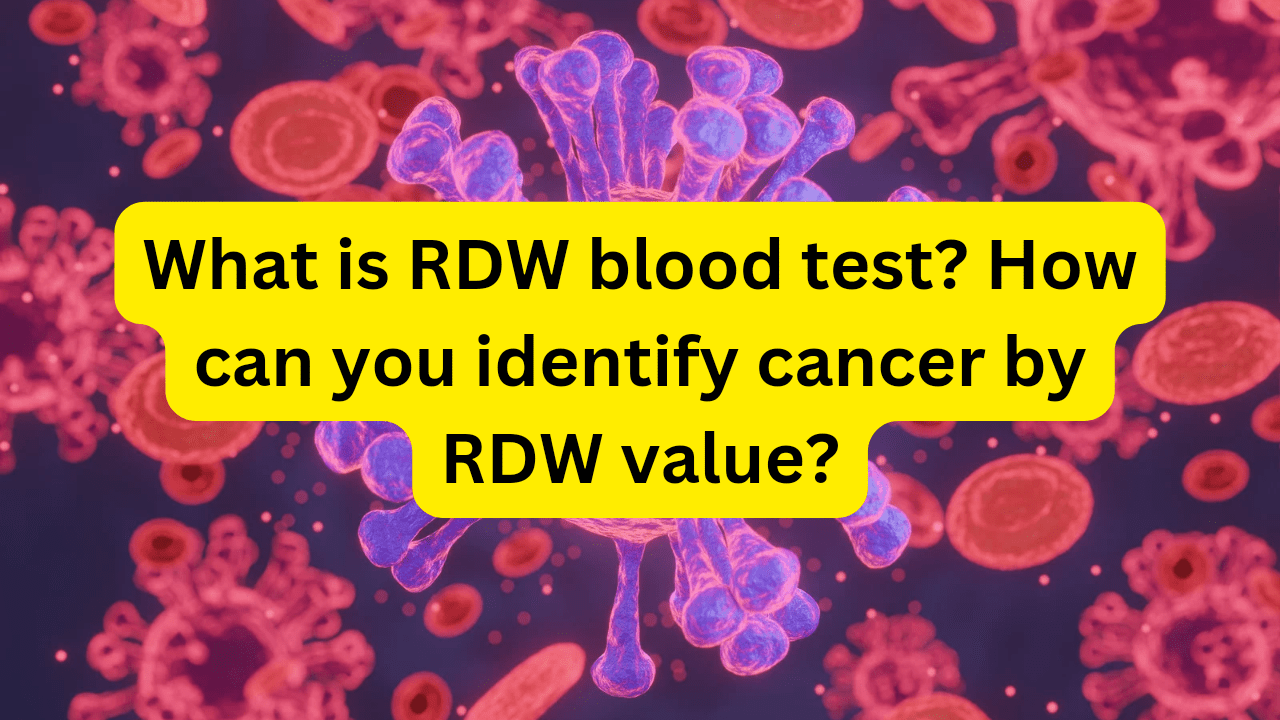RDW stands for Red Cell Distribution Width. It measures the variation in the size of red blood cells (erythrocytes) in a blood sample. It is typically reported as a percentage.
आरडीडब्ल्यू रेड सेल डिस्ट्रीब्यूशन विड्थ का संक्षिप्त नाम है। आरडीडब्ल्यू लाल रक्त कोशिकाओं के आकार में भिन्नता का माप है।
Routine blood tests, such as a complete blood count (CBC), provide valuable insights into your overall health. One of the parameters measured in a CBC is Red Cell Distribution Width (RDW).
While a high RDW is typically associated with various medical conditions, including anemia, it has raised concerns regarding its connection to cancer.
In this article, we will learn about what RDW is, how it’s measured, and the potential link between a high RDW and cancer.
RDW blood test mean
RDW indicates the variation in the size of red blood cells in a blood sample.
Red blood cells (RBCs) are responsible for transporting oxygen from the lungs to the body’s tissues. When the size of these cells varies significantly, it’s the cause of certain health issues.
RDW is typically reported as a percentage, and it reflects the range of sizes of red blood cells.
A normal RDW falls within the range of 11.5% to 14.5%. When RDW is higher than this range, it suggests that the red blood cells have varying sizes, a condition known as anisocytosis.
High RDW blood test causes
A high RDW is not a definitive diagnosis of cancer, but it can be associated with several health conditions, including:
- Anemia: One of the most common causes of a high RDW is anemia, which can result from various factors, such as iron deficiency, vitamin deficiencies, or chronic diseases.
- Inflammation: Chronic inflammation from conditions like autoimmune diseases or infections can affect red blood cell size and contribute to a high RDW.
- Vitamin Deficiencies: Deficiencies in vitamin B12 and folate can lead to larger red blood cells, causing a high RDW.
Association Between High RDW and Cancer
While a high RDW is not a direct indicator of cancer, it can be seen in cancer patients, especially in cases of advanced cancer or cancer-related anemia.
Cancer can cause anemia in multiple ways, such as by interfering with the body’s ability to produce red blood cells or by causing chronic inflammation.
Additionally, cancer patients undergoing certain treatments, like chemotherapy, may experience changes in their blood cell counts, including RDW. These treatments can affect the production of red blood cells, leading to variations in cell size.
